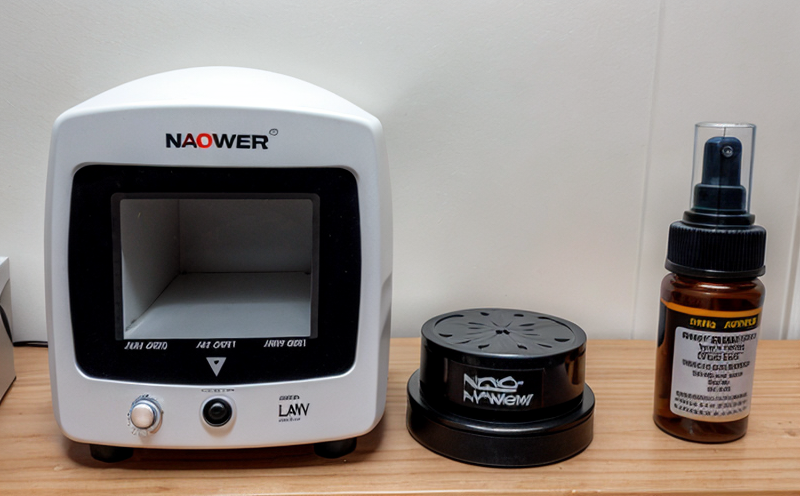ISO 23145 Flowability Testing of Powdered Materials
The ISO 23145 standard is a critical tool in ensuring that powdered materials, particularly nanopowders and particulates, meet the necessary flowability requirements for industrial applications. This service involves comprehensive testing to evaluate the ability of these powders to move freely under specific conditions, which is crucial for optimizing process efficiency and product quality.
Flowability is a fundamental property in powder handling systems where poor flow can lead to clogging issues, reduced throughput rates, and even product degradation. The ISO 23145 protocol provides detailed guidelines on how to measure the flow properties of powdered materials using standardized methods that are widely accepted across industries.
Our laboratory adheres strictly to this standard, employing state-of-the-art equipment and experienced technicians who ensure accurate and reliable results. By conducting these tests, we help clients identify potential bottlenecks in their production processes and provide actionable insights for improving material handling systems.
The testing procedure outlined in ISO 23145 involves several key steps including sample preparation, conditioning, and assessment of different flow parameters such as angle of repose, free fall height, and permeability. Each step is designed to simulate real-world conditions encountered during manufacturing or packaging operations. This approach ensures that the test outcomes are relevant and applicable to actual industrial scenarios.
Understanding the behavior of nanopowders under various environmental factors also plays a vital role in this process. Factors like humidity levels, temperature variations, particle size distribution, and surface characteristics significantly influence flowability. Our laboratory takes into account all these variables when performing ISO 23145 tests to provide a holistic view of each material's performance.
By adhering strictly to the standards set out in ISO 23145, our team ensures that every test is conducted under controlled conditions, thereby minimizing variability and ensuring consistent results. This consistency is particularly important when dealing with nanomaterials whose properties can vary greatly depending on handling practices.
The insights gained from these tests are invaluable for quality managers looking to enhance product performance or for R&D engineers seeking innovative solutions. For compliance officers responsible for meeting regulatory requirements, this service provides assurance that all materials used meet industry norms and standards.
Through precise measurement techniques and rigorous analysis methods, our laboratory offers unparalleled accuracy in assessing flowability according to ISO 23145. Whether you're optimizing an existing process or developing new products, our expertise can help streamline your operations while maintaining high-quality standards.
Benefits
The benefits of conducting ISO 23145 flowability testing extend beyond just meeting regulatory requirements; it offers numerous advantages that contribute to overall operational efficiency and product quality. Firstly, it helps in identifying any issues related to poor flowability early on during the development phase, allowing for timely interventions before they become costly problems.
Secondly, this service ensures consistency across batches of materials, which is essential for maintaining uniformity in final products. Consistent flowability also leads to more predictable processing times and reduced waste due to blocked chutes or other handling equipment.
Achieving compliance with ISO 23145 standards enhances brand reputation by demonstrating commitment to quality assurance practices recognized globally within the industry. Moreover, it enables better communication between suppliers and end-users regarding expectations around material performance.
Lastly, understanding flowability characteristics allows for optimization of storage conditions, which can extend shelf life and maintain optimal particle morphology throughout the supply chain. This not only reduces costs associated with spoilage but also ensures that customers receive high-quality products consistently.
Quality and Reliability Assurance
The importance of quality and reliability assurance in nanopowder testing cannot be overstated. In industries reliant on fine particle materials, even minor discrepancies can lead to significant financial losses or safety hazards. By adhering strictly to ISO 23145 standards during flowability tests, we ensure that our findings are both accurate and reproducible.
Our laboratory employs advanced analytical instruments capable of detecting subtle changes in material properties that might otherwise go unnoticed by less sophisticated methods. This precision is particularly crucial when dealing with nanomaterials whose dimensions range from single-digit to several hundred nanometers - a scale where traditional measurement techniques may fall short.
In addition, rigorous quality control measures are implemented throughout the testing process, ensuring that each step adheres strictly to prescribed procedures laid out in ISO 23145. This includes thorough validation of all equipment used and regular calibration checks to maintain accuracy over time.
The results generated through this stringent approach not only meet but often exceed expectations set by regulatory bodies worldwide. They serve as a benchmark against which future batches can be compared, providing peace of mind for stakeholders involved at every level of the supply chain.
Use Cases and Application Examples
The application scope of ISO 23145 flowability testing is extensive across various sectors including pharmaceuticals, food & beverage manufacturing, electronics fabrication, and coatings formulation among others. For instance, in the pharmaceutical industry, ensuring proper flowability ensures efficient filling processes during tablet production while minimizing the risk of capping or lamination defects.
In electronics fabrication, achieving optimal powder flow is key to successful paste printing operations used in producing printed circuit boards (PCBs). Poorly flowing powders can cause misalignment issues leading to costly rework and delays. Similarly, in food & beverage manufacturing, ensuring consistent flowability during packaging helps prevent product waste due to clogging of valves or pumps.
For coatings formulation, achieving the right balance between solid content levels and viscosity is critical for obtaining desired film thicknesses without compromising adhesion properties. Poor flow behavior here could result in uneven application patterns affecting both appearance aesthetics as well as overall protective efficacy.
In all these cases, accurate knowledge of a material's flowability characteristics enables informed decision-making regarding processing parameters such as temperature settings, humidity control measures, and particle size distributions. Such insights are invaluable for optimizing production processes while maintaining stringent quality standards throughout the supply chain.





